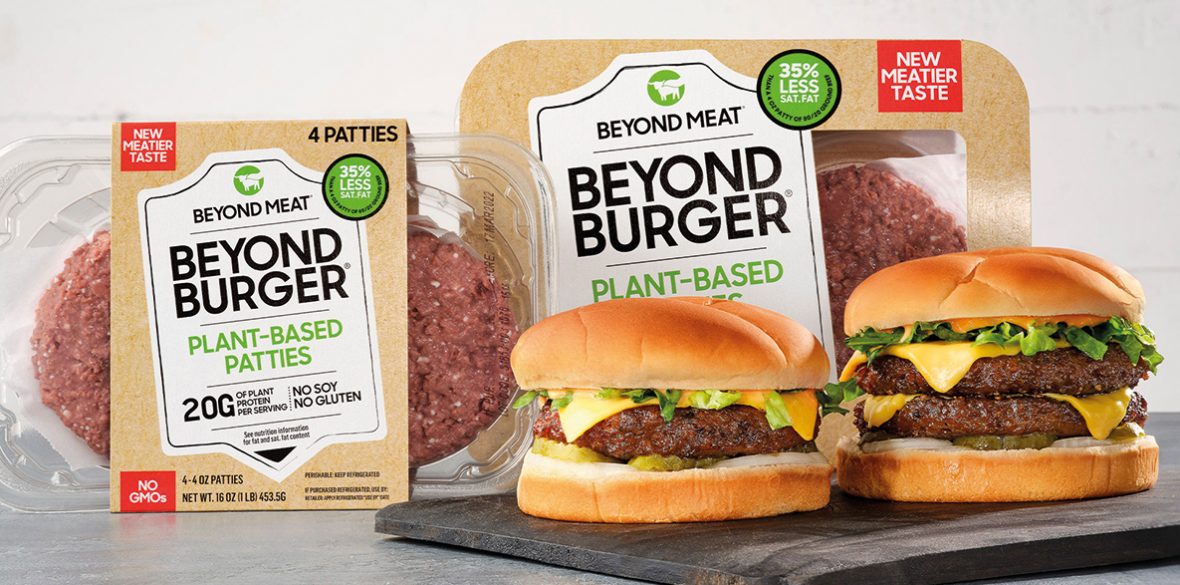This is the last article you can read this month
You can read more article this month
You can read more articles this month
Sorry your limit is up for this month
Reset on:
Please help support the Morning Star by subscribing here
REGULAR readers of my Ramblings will have been introduced to my granddaughter Lizzie before.
Lizzie has just finished a degree in International Relations and Chinese at the School of Oriental and African Studies (Soas), University of London.
She is also student digital ambassador for Soas where one of her most recent blogs (easy to find online) was entitled Plant-based proteins: a key to achieving China’s climate commitments?
Lizzie has been an enthusiastic vegan for several years, before that she was a vegetarian. She and I have discussed this many times. I eat and enjoy meat, but as regular readers will perhaps have noticed I usually prefer fish — particularly shellfish — to too much red meat.
Lizzie may be an enthusiastic vegan but she isn’t too evangelical about it and when we eat together it’s a chance for a thoughtful conversation rather that a rant from either of us — although I must confess we can both be ranters when the situation demands. Must be in the genes.
We have discussed the amazing growth in veganism and both laughed at the new trend to advertise everything from sofas to condoms as vegan.
Eating out together Lizzie often impresses me with some of her choices of vegan dishes and I have to agree the growth in veganism and vegetarianism has certainly massively improved the choice and flavour of vegetarian dishes.
Lizzie seems to enjoy winding up her aged grandparent but I occasionally get my own back. I love to show her my little bog garden full of plants that eat meat. Growing carnivorous plants has been a lifetime interest for me. These amazing plants certainly aren’t vegan.
Many vegans choose this particular diet for health reasons, others because they love animals but it seems to me if we all became vegan the future for farm animals would be non-existent.
The whole question of what eats what in nature is fraught with ethical contradictions. To see a pod of orcas — killer whales — hunting and killing a young seal or a pride of lions bring down an old and sick zebra teaches us just how cruel nature can sometimes be.
Some years ago there was a major controversy about kestrels learning that garden bird tables were excellent places to find, kill and eat small birds feeding from the table. Some of us said that the bird table was just fulfilling its primary purpose and feeding birds — including kestrels.
Others found it distressing and sought ways to protect the small and pretty birds from the murderous raptor. Bird charities found it a difficult situation to deal with.
I always supported the kestrel’s right to eat but recently a drama in my tiny garden made me think hard. I was growing my favourite weed — no not that one — but the teasel, outside my dining room window. The beautiful purple-tinged teasel flowers not only look spectacular but attract bees, butterflies and moths.
During the autumn and winter, the teasel really comes into its own. The tall plant becomes brown and prickly as the seed heads dry out. The goldfinch adores these seeds and his perfectly designed beak makes light work of emptying the pods.
My handsome teasel plant was just starting to flower when it attracted the attention of a fat wood pigeon. As it was sizing up my teasel it missed the fact that a passing buzzard was, in turn, sizing it up.
When the feathers started to fly my teasel was the first victim, snapped in half. The birds flew off noisily continuing the bloody struggle. I didn’t see how it ended, but my money is on the buzzard.
Back to Lizzie and her views on China and veganism. Her blog taught me some things I certainly didn’t know. For instance, in China McDonald’s has launched a breakfast menu featuring plant-based “spam” produced in Hong Kong.
This she says, may be the first time the fast-food behemoth has partnered with an alternative protein company in China, but it fits into a growing appetite for plant-based protein amongst Chinese consumers — and could signal a path for China to meet both its climate and food security commitments.
Annual meat consumption in China has soared in recent decades — from 5kg (11lb) of meat per person in the 1960s to 63kg (139lb) today — and looks set to continue to rise.
China now consumes 28 per cent of the world’s meat — from chicken feet to fillet steak. However, there is still a significant meat gap with Western countries. In US the average meat eater chomps through over 100kg (220lb) of steak, hamburgers and other meat.
Animal agriculture is highly detrimental to the environment — worldwide animal agriculture emissions, including those from processing, growing feed and transport contribute at least 14.5 per cent of global greenhouse gas emissions.
Climate change has hit China hard with extreme weather events such as floods, droughts, heatwaves and sandstorms. As a result, the Chinese government has begun to position itself as a global leader in climate policy, says Lizzie in the blog.
This suggests that a move towards plant-based proteins for China’s increasingly meat-hungry middle class will not only help fill the protein gap, ensuring nutritious diets for the country’s population, but will also help China to achieve its climate commitments.
In 2018, beef imports into China topped a million tons. Seventy per cent came from Latin America. Beef has the worst deforestation footprint of all meats. China is also the world’s largest importer of soybeans for use in animal feed and this is responsible for more Latin American deforestation.
China, of course is not alone, other countries are just as responsible. Indeed, many Western developed countries who started this trade — and the resulting environmental problems — are turning on China and blaming it and other developing countries.
Although China is the world’s largest consumer of beef and the largest importer of soybeans, meat consumption per capita is still well below that of Western countries, particularly in China’s less developed rural areas.
Reducing reliance on livestock and turning to plant-based proteins generally offers a much lower carbon footprint than conventional meat. However, Lizzie warns, many highly processed meat alternatives come with their own environmental concerns, including reliance on soy and palm oil monocultures.
China may have a historical advantage here, with its long tradition of many domestically produced plant-based proteins like tofu. The Chinese have been eating tofu — once known as “small mutton” — for well over a thousand years.
Recent research suggests that Chinese consumers, particularly women, are far more accepting of plant-based mock meats than US consumers. Health, tastiness and sustainability seem to be key motivators.
The company Beyond Meat, a leading US producer of plant-based meat alternatives, has recently opened a plant near Shanghai — its first manufacturing centre outside of the US.
Chinese firms have also begun to develop plant-based alternatives.
However, despite scientific evidence showing the contribution of agriculture to carbon emissions, the Chinese government has not yet set updated emission targets for this sector.
Lizzie believes this is due to concerns about China’s domestic food security, one of the main priorities of the latest Five Year Plan and currently seen as a greater priority than reducing emissions.
Lizzie and other vegans argue that plant-based alternatives require less land to produce the same amount of protein and could also help reduce China’s current reliance on imported meat and animal feed — made more challenging due to the US trade war against China.
I recently watched a TV programme about farming in Northern Ireland and it introduced me to a new concept called zero grazing.
Dairy cattle are kept indoors for the whole of their milk producing life. Huge mowing machines cut the grass and deliver it indoors to the cattle.
The cows are milked by amazing robot machines that need no human intervention. The cows can choose when they want to be milked and how often. Milk production from these indoors zero-grazing cows is huge, vastly more than from conventional cattle grazing outside.
As I watched the programme I couldn’t help asking the question, do we really have the right to raise an animal that never sees the sky or munches fresh grass just to get a cheaper pint of milk?
I may have to start thinking about eating a lot less meat and dairy products, but please don’t tell Lizzie I said so.











